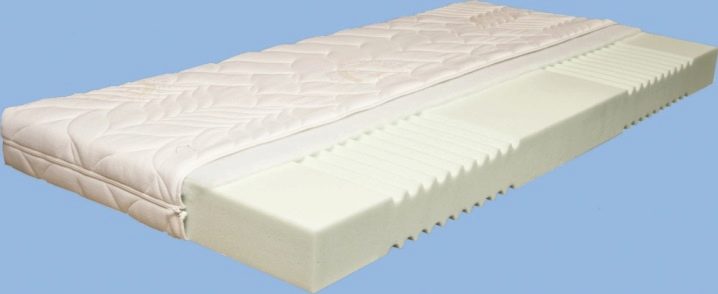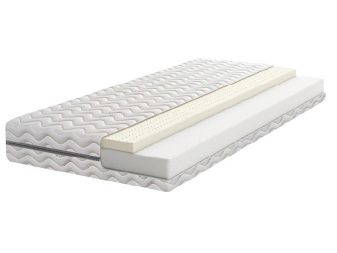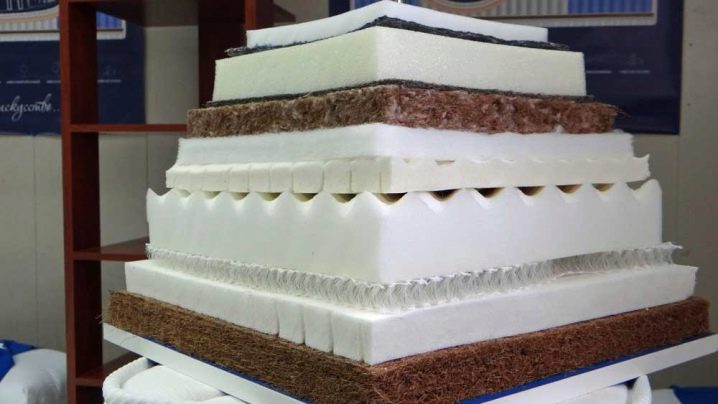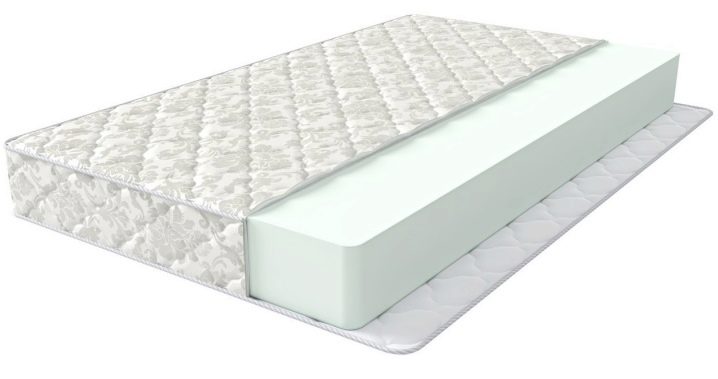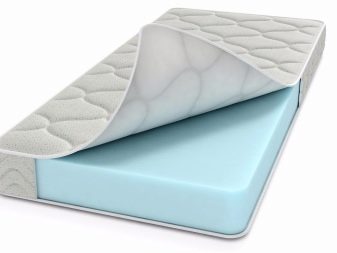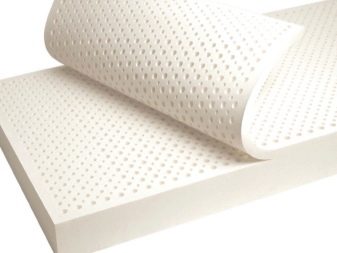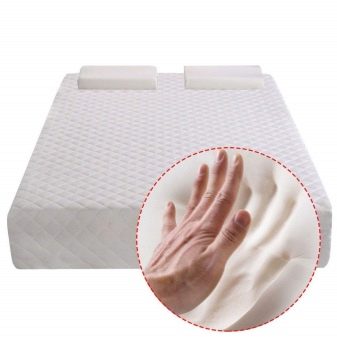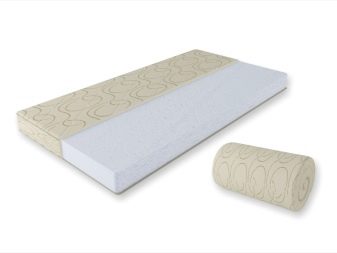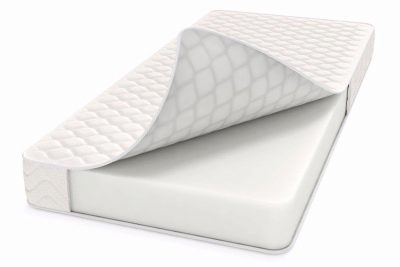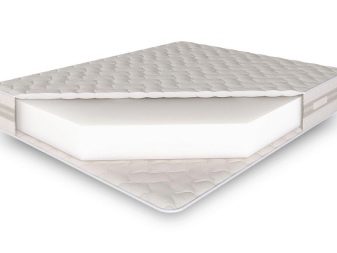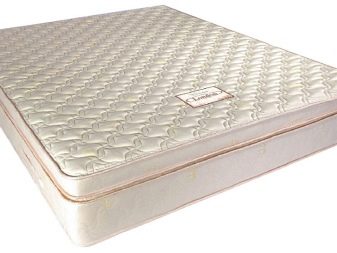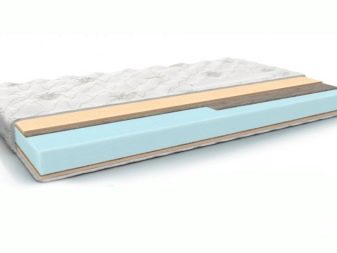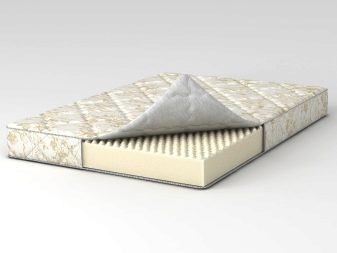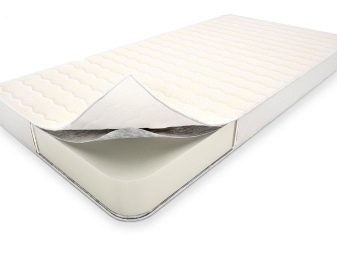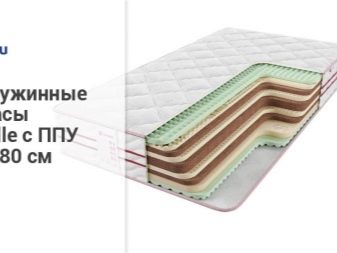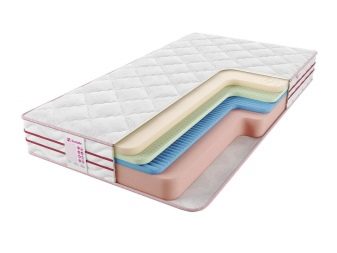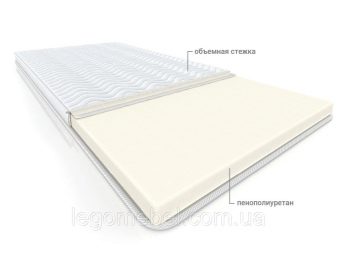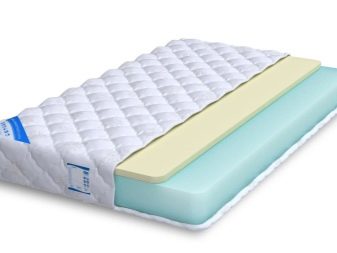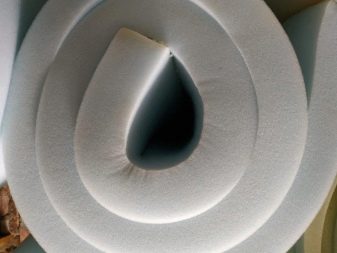Features of a polyurethane foam mattress and its choice
A high-quality mattress is a guarantee of a comfortable sleep and a person's well-being. Now on the market there are many models from different materials, each of which has its own unique properties. Polyurethane foam mattress is one of the most common orthopedic products.
What it is?
PPU (polyurethane foam) is an artificial material with a porous structure, which consists of up to 95% air. It is closest in its qualities to natural latex, but has a lower cost.
Initially, the first PU foam mattresses were made from raw materials from the Scandinavian company Porolon, therefore, such models were called foam rubber. Since then, a lot has changed in production technology, so modern polyurethane foam is not much like its ancestor, the Porolon brand.
Let's consider how the production of polyurethane foam looks like.
- Polyols and polyisocyanates (petrochemical feedstock) are mixed. There are also technologies that make it possible to replace these two substances with plant analogues, but this practically did not find application in production due to economic inexpediency (too high price of raw materials).
- Water is added to the resulting mass. A chemical reaction begins, during which CO2 is formed, which foams the substance, making the structure of the future product porous.
- While the reaction of carbon dioxide evolution is going on, stabilizing and catalyzing additives are introduced into the mixture. This allows you to give the raw material the desired properties (for example, non-combustible) and make it safe.
- The substance is poured into special forms and leave for final polymerization for 48 hours.
This technology allows you to create an elastic, dense material of varying rigidity, completely safe for humans.
Mattresses with polyurethane foam filling have good consumer properties and may well compete with high-class orthopedic products.
They can withstand a load of up to 120 kg and, even at maximum weight, retain their shape and elasticity, which ensures a comfortable sleep and adequate support for the spine.
Advantages and disadvantages
As with any product, polyurethane foam mattresses have advantages and disadvantages. Let's dwell on the pros.
- High elasticity. The product provides the most correct back support during sleep.
- Low cost. This point is especially attractive because the quality does not suffer. Most people can afford to buy a mid-range PU foam mattress.
- Viscosity. Products made from this raw material are very pleasant to the touch. Ideal for overweight consumers. Also, due to its softness, the foam mattress is perfect for spouses of different weights - everyone will be comfortable on it.
- Long service life. If you do not take into account too budgetary models, then a foam product can last up to 10-15 years.
- Excellent orthopedic properties. PU foam completely repeats the curves of the spine, thereby ensuring the correct position of the body during rest.
- Resistant to deformation.
- Convenience of transportation and storage. This applies primarily to springless models. They can be rolled up on their own and transported or removed / taken out if necessary, which is especially important for rented accommodation or guests.
Some of the nuances can be attributed to the negative aspects of products from polyurethane foam.
- Poor quality of the mattress if the technology is not followed in production. That is why you need to choose products from well-known companies that value their reputation and monitor compliance with all processes.
- High hygroscopicity. Polyurethane foam is able to absorb liquids, steam and odors. It can be very problematic to get rid of the latter. However, if animals and small children do not live in the house, then you can not worry about this item.
As you can see, foam mattresses have clearly more advantages, which means that you can safely purchase such a product, despite minor flaws.
Comparison with other types
In addition to polyurethane foam, there are several other materials that compete with it in price or consumer characteristics, among them:
- latex;
- holofiber;
- memori foam (a special type of polyurethane foam).
Latex for furniture and orthopedic products is made from hevea. The sap of this tree is filtered several times, adding various components, and then vulcanized. There are two types of latex products: Talalay (soft structure) and Danlop (hard foam).
Also, some manufacturers offer artificial latex, which is made from synthetic raw materials. However, good mattress manufacturers do not use it, as it is of poor quality and has a short lifespan.
Latex filler has the following advantages:
- environmental Safety;
- good orthopedic properties;
- resistance to temperature changes;
- the service life of a mattress made of this material is 10-20 years.
The disadvantages of latex include its very high cost. Only an expensive product has all the advantages described above. The cheaper the offered mattress, the lower the quality of the filling. If you decide to purchase a latex orthopedic product, then it is better to consider expensive options with a natural composition.
Holofiber (polyester) is a synthetic non-woven fiber that resembles cotton wool. It has a simple manufacturing technology, as well as a wide range of applications: clothing, furniture, toys, bedding.
The advantages of the material include:
- hypoallergenic;
- good breathability;
- low ability to absorb moisture;
- high thermal insulation properties;
- pathogenic microorganisms do not multiply, since holofiber is not suitable for this;
- high service life;
- ease of care - can be washed, cleaned with a washing vacuum cleaner;
- low cost.
Holofiber has one conditional drawback - its synthetic origin. But this is more than offset by the advantages of this filler.
Memory foam is a material with a memory effect that allows you to make your sleep as comfortable as possible. The "memory" of this orthopedic product is enhanced by heating, that is, the heat of a person makes the material more pliable and ideally follows the contours of the body, providing maximum support.
Memory foam mattresses are of two types.
- Viscoelastic. They are of high quality, ideally adapt to the ambient temperature.
- Thermoelastic. Suitable for use only in warm rooms. At low temperatures, orthopedic properties are reduced.
The positive aspects of Memory foam products are:
- the ability to withstand a load of up to 200 kg;
- hygroscopicity, the material "breathes";
- perfect back and neck support;
- comfort;
- hypoallergenic.
However, there are significant drawbacks, the main of which is the high cost.
In addition, it will take some time to get used to such a mattress, which will also become a problem for some consumers. Some not very high-quality models may have a strong enough foreign smell that takes a long time to disappear.
Thus, we can conclude that among the closest competitors, polyurethane foam mattresses are the undisputed leader. These orthopedic products have an ideal price-performance ratio.
Species overview
Polyurethane foam mattresses have several varieties, depending on the main characteristics. This variety allows you to choose the optimal model for any request: for adults, a child, a person with a sore back, etc. PUF mattresses differ in some parameters.
By hardness
Depending on what additives were introduced into the polyurethane foam during manufacture, certain types are distinguished.
- Very soft. The cheapest models usually consist of very cheap foam that is not able to provide the necessary back support during sleep. Some manufacturers supplement such models with coconut coir. This makes it possible to somewhat improve the orthopedic qualities of the mattress. Such products are usually purchased for children from 8 to 15 years old.
- Soft. They have better supporting properties than the first option. However, for people with back problems, this may not be enough. Therefore, before purchasing such models, you should consult with an orthopedist. If the doctor gives the go-ahead, you can safely take such a mattress and sleep like on a feather bed. Such mattresses are usually purchased for the elderly.
- Medium hard. Such products are not pressed through, but at the same time they take an anatomical shape and ideally support the spine. These mattresses are suitable for most adults and have a very long service life, unlike the first two types.
- Tough. Recommended for people with overweight, as well as with various diseases of the musculoskeletal system, for example, osteochondrosis or protrusions of the spine.
By thickness
The thickness of polyurethane foam mattresses ranges from 7 to 30 centimeters. However, doctors do not recommend using too thin models as the only orthopedic product. With their help, you can only adjust the softness (apply as a topper) of an existing mattress, for example, a spring mattress.
To size
The most popular, according to sales statistics, is a polyurethane foam mattress with dimensions of 120x200 centimeters. A piece of this size is ideal for one person.
One-and-a-half models have dimensions 140x200 cm and are the second most popular. Such a mattress can also accommodate two people, but with a small weight. For a married bedroom, a PPU mattress is usually purchased with dimensions of at least 160x200 cm.For a teenager, a product with dimensions of 80x200 cm will be an excellent option.
By the way! Some people buy two 80x200 mattresses for a double bed, taking into account individual preferences, and just put them side by side. For example, if the spouses have too big a difference in weight or someone has diseases of the musculoskeletal system.
Popular brands
Most of the well-known manufacturers of mattresses produce several models of polyurethane foam mattresses. The most popular with buyers are those presented below.
- Askona. Russian manufacturer that has modernized the production of mattresses. Now they are manufactured on a conveyor line, which has led to faster turnaround times and improved product quality. The company has a large number of patents for spring blocks and materials for orthopedic products, as well as a developed network of branded stores. The company sells over 2,000,000 mattresses per year.
- Stories. A Russian manufacturer that has appeared on the market quite recently, but has already won the love of the consumer. And all thanks to affordable prices and high quality.
- Sontelle. A Russian company that produces orthopedic mattresses, pillows and other products for a comfortable sleep in the budget segment. The materials used are of good quality, which is confirmed by the relevant certificates. The manufacturer gives a 3-year warranty for their mattresses.
- Ormatek. One of the industry leaders in Russia. The production uses only high-quality materials and new foreign equipment. This allows you to keep the quality at its best for many years.
- Benartti. Produces orthopedic products in the middle price segment. The company pays great attention to the quality of the materials used.
Selection rules
The right mattress is the key to sound sleep and well-being all day long. It depends on him whether a person wakes up rested or broken, with pain in the back and neck. To find a good mattress, here are some guidelines.
- Selection of the rigidity of the product. If a person does not have pronounced problems, then you can opt for a medium-hard mattress. However, it is advisable to go for a consultation with an orthopedist before buying, so that the specialist can determine what type of product is needed. And then go to the store and try to lie down on different models.
- Determination of the suitable model by weight. All manufacturers indicate the maximum permissible load on the berth. The service life of the product depends on this, as well as the comfort of its use. The firmness of mattresses is indicated for people of average build (75-90 kg). Therefore, for the overweight, it is necessary to select a tougher version, and for thin ones - a soft one.
- Selection of the size and thickness of the mattress. For most adults, products with a height of 15 to 30 centimeters are suitable. For thin ones, you should not purchase a mattress that is too thick - optimally from 17 to 23 centimeters. The width of the mattress should not be larger than the base, even by a few centimeters. This will lead to sagging and deformation of the product and the lack of the required orthopedic effect.
- External material. Here you should rely on your own preferences. Natural materials are more pleasant to the touch, but more demanding in care. While modern synthetic fabrics are also hygroscopic and breathable, they are much easier to keep clean.
The main rule when choosing is to build on individual characteristics and preferences. It is better to buy an inexpensive bed base than to save on a mattress.
How to do it?
It should be noted right away that making a full, high-quality mattress with your own hands will not work. But it is quite possible to make a "stove bench" out of foam rubber for occasional use or as an option for guests. In order to make a mattress for a bed, you will need the following materials and tools:
- high density foam rubber;
- foam rubber for filling, softer;
- special glue for polyurethane foam (for example, SEFOX brand);
- fabric for the cover;
- sharp construction knife;
- scissors;
- sewing machine;
- tape measure or tailor's measuring tape.
The step-by-step manufacturing process is as follows:
- first you need to decide on the size of the future mattress, for this we measure the bed frame with a tape measure and write down the values obtained;
- we proceed to cutting the foam rubber, first we make a box of hard foam rubber with a thickness of 5-10 centimeters;
- then we glue the cut out parts of the base together and proceed to filling with softer foam rubber (each layer of filler must be covered with glue, otherwise the foam rubber will break and the mattress will not keep its shape);
- then we dry the mattress, and at this time we sew the cover according to the available sizes;
- we will cut the fabric and, using a sewing machine, sew all the details by inserting a lock on one narrow side, this will make it easy to put on and take off the cover (note: the cover is sewn with minimal increments, since too loose a product will not provide the mattress with additional elasticity), if you are sure of you have no strength, you can contact the studio, where the cover will be sewn according to individual sizes;
- put on the cover on the dried base and the mattress is ready!
Care Tips
In order for a polyurethane foam mattress to serve for a long time, you should adhere to simple rules:
- use the product only in a case and periodically wash it;
- turn the mattress once a month to ventilate;
- periodically vacuum;
- do not expose to direct sunlight.
These are standard tips to keep your mattress in good condition for its entire life.
Review overview
Most buyers of polyurethane foam mattresses were satisfied with the purchase and the product only pleases. However, there are also negative reviews. Most often this is due to mistakes in the selection, for example, the maximum allowable weight was not taken into account and the mattress was chosen too soft.
A foam mattress with a competent approach to its purchase can last a long time and give you good health and healthy sleep.
